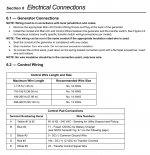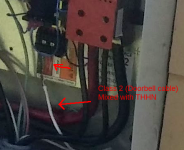Twebber1812
New User
- Location
- Morris, IL
- Occupation
- Journeyman Electrician
I have been installing generators for close to 8 years. I figure somewhere in the neighborhood of 1,500 generators. The company has existed for 20 years prior to me. I have always run a single conduit from the ATS to the generator, and pulled the feeder and control wires all in the same conduit. This is how Generac always did it when purchasing an ATS with a prewired whip. This is the same way that the tray cable sold by cablemaster does it as well. I had an inspector the other day tell me that wires 194 and 23 that carry dc voltage are not allowed to be in the conduit with the control wires that carry ac voltage. I'm fairly confident he is wrong; i'm just not sure how to prove it. any thoughts?



